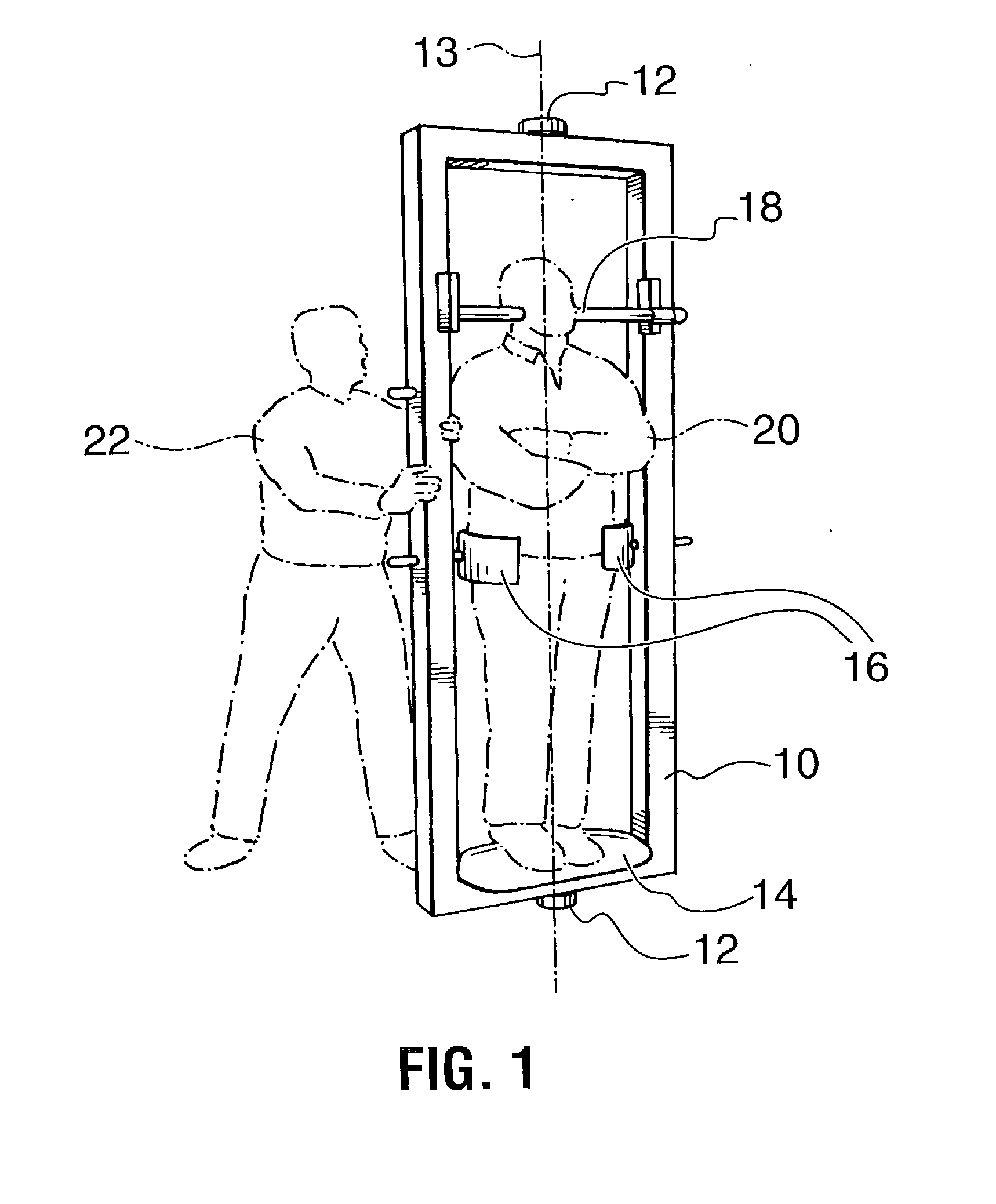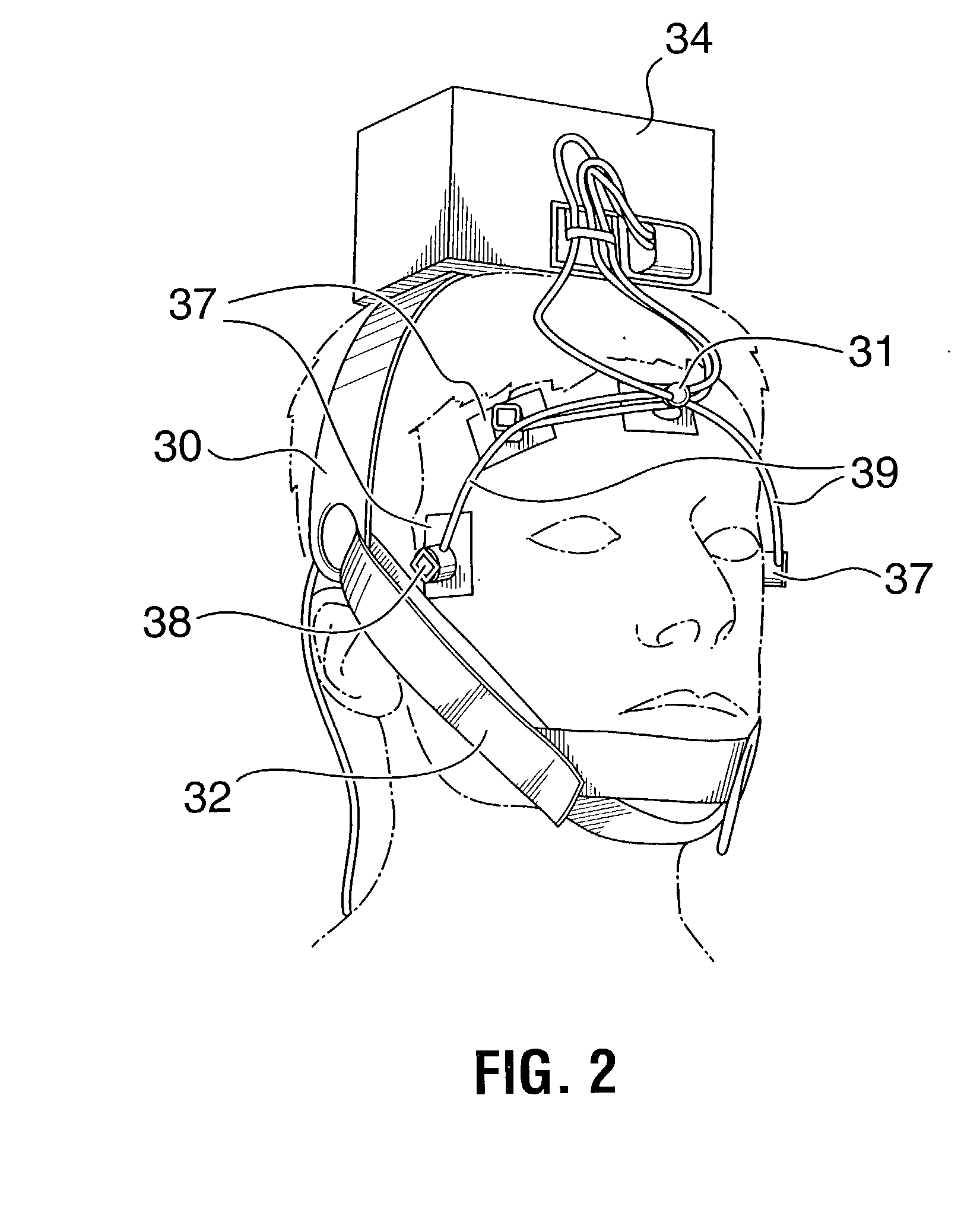Method for evaluating vestibular response
a technology of vestibular response and clinical evaluation, applied in the field of vestibular response evaluation, can solve the problems of high cost of testing, high interpreter training, and high cost of accurate tests
- Summary
- Abstract
- Description
- Claims
- Application Information
AI Technical Summary
Benefits of technology
Problems solved by technology
Method used
Image
Examples
Embodiment Construction
[0027] FIG. 1 shows an apparatus for evaluating the vestibular response of a human subject. The apparatus comprises a rectangular frame 10 having upper and lower bearings 12 arranged such that the frame is rotatable about symmetrical vertical axis 13. In use, a human subject 20 stands in the erect position on platform 14 such that the axis of rotation 13 extends along the longitudinal axis and is constrained at the hips by brackets 16 and at the head by brackets 18. In use, an operator 22 imparts a sudden rotational movement to the frame 10. As a result the subject rotates about the axis with the head and torso rotating together in unison.
[0028] In the illustrated embodiment, the frame is rotatable about the vertical axis. It will be understood the frame could be mounted so as to allow rotation about different axes so long as they pass through the longitudinal axis of the subject. For example, the subject could be rotated in the horizontal position with suitable supporting harnesses...
PUM
 Login to View More
Login to View More Abstract
Description
Claims
Application Information
 Login to View More
Login to View More - R&D
- Intellectual Property
- Life Sciences
- Materials
- Tech Scout
- Unparalleled Data Quality
- Higher Quality Content
- 60% Fewer Hallucinations
Browse by: Latest US Patents, China's latest patents, Technical Efficacy Thesaurus, Application Domain, Technology Topic, Popular Technical Reports.
© 2025 PatSnap. All rights reserved.Legal|Privacy policy|Modern Slavery Act Transparency Statement|Sitemap|About US| Contact US: help@patsnap.com



